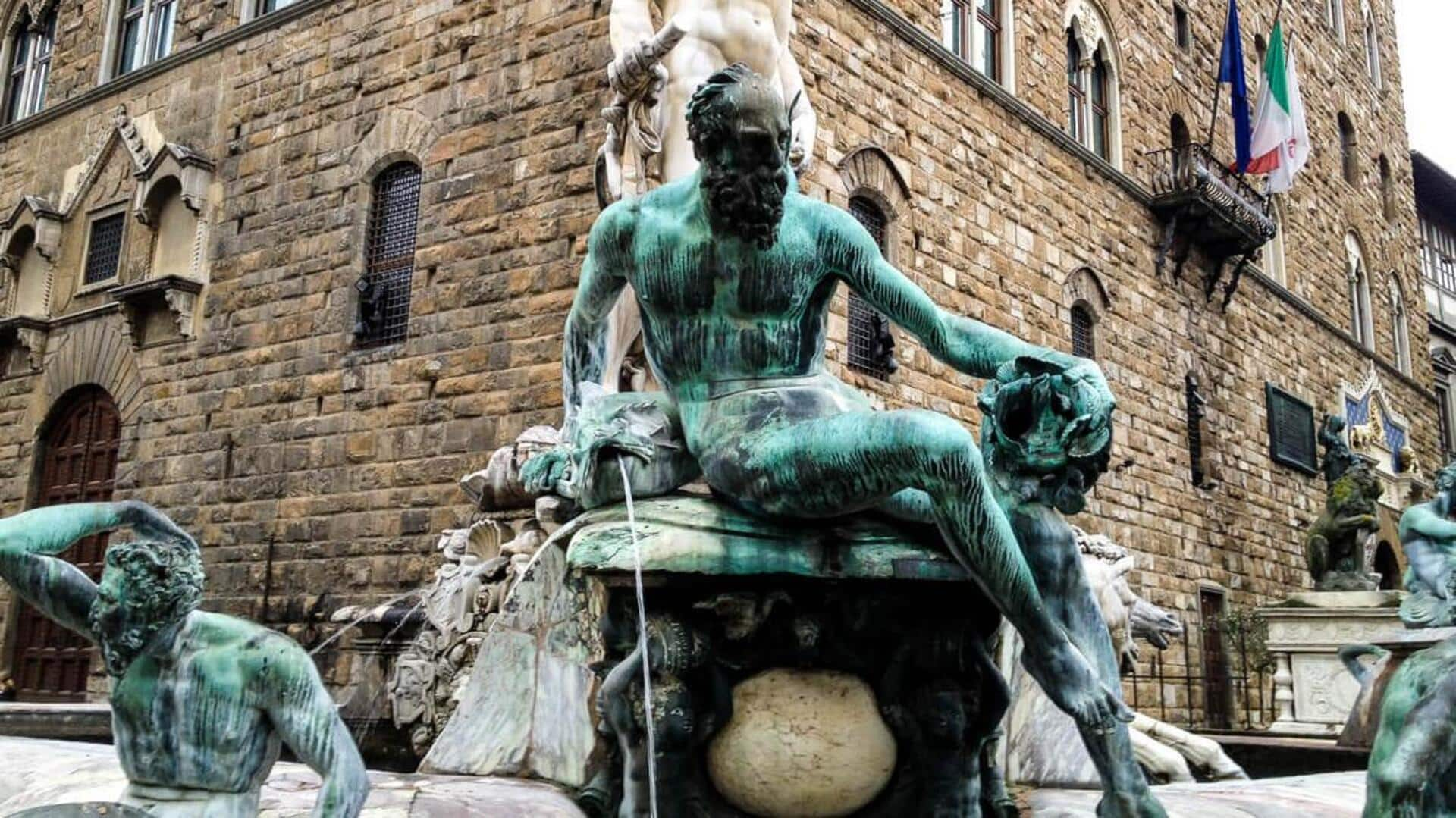
Marvel at Florence's iconic sculptures
What's the story
Florence, the Renaissance's cradle, is a city alive with art and history. It boasts some of the world's most renowned sculptures, each narrating a story that mirrors the creator's genius and an era when art thrived. These five iconic sculptures in Florence are monuments to human creativity and ingenuity, standing as testaments to the enduring spirit of artistic achievement.
Masterpiece
Michelangelo's David
Michelangelo's David, a symbol of strength and youthful beauty, represents the biblical hero David. Housed in the Accademia Gallery, this masterpiece with its detailed anatomy and expressive realism captivates all who see it. Carved from a single marble block, Michelangelo's skill brings this stone to life. Viewing it is not just about seeing art; it's about experiencing a piece of history.
Piazza drama
The rape of Polyxena
Found in the Loggia dei Lanzi on Piazza della Signoria, "The Rape of Polyxena" is a dynamic sculpture that depicts an intense moment from Greek mythology. Created by Pio Fedi, this work stands out for its dramatic expression and intricate details that convey motion and emotion vividly. The sculpture captures the viewer's imagination, transporting them back to ancient times through its storytelling prowess.
Mythical encounter
Perseus with the head of Medusa
Benvenuto Cellini's bronze masterpiece, "Perseus with the Head of Medusa," also located in Loggia dei Lanzi, showcases not only artistic brilliance but also technical mastery. This sculpture represents Perseus holding up Medusa's head triumphantly after slaying her. The attention to detail and emotional intensity make it a captivating sight that draws viewers into its mythical narrative.
Aquatic majesty
Neptune Fountain
The Neptune Fountain dominates Piazza della Signoria with Bartolomeo Ammannati's grand depiction of Neptune standing atop a chariot pulled by sea horses. This imposing figure symbolizes Florentine naval power and offers an impressive example of Mannerist artistry in public spaces. Surrounded by water jets and aquatic creatures sculpted with exquisite care, it provides a refreshing oasis amidst Florence's bustling streets.
Strength displayed
Hercules and Cacus
Beside Michelangelo's David, Bandinelli's Hercules and Cacus stands as a tribute to Florentine mythological appreciation. This marble piece shows Hercules defeating Cacus, highlighting strength through detailed muscles and dynamic poses. It symbolizes triumph over evil, embodying Florence's spirit as an open-air museum filled with timeless stories. Each visit uncovers awe-inspiring chapters of human achievement in this city.